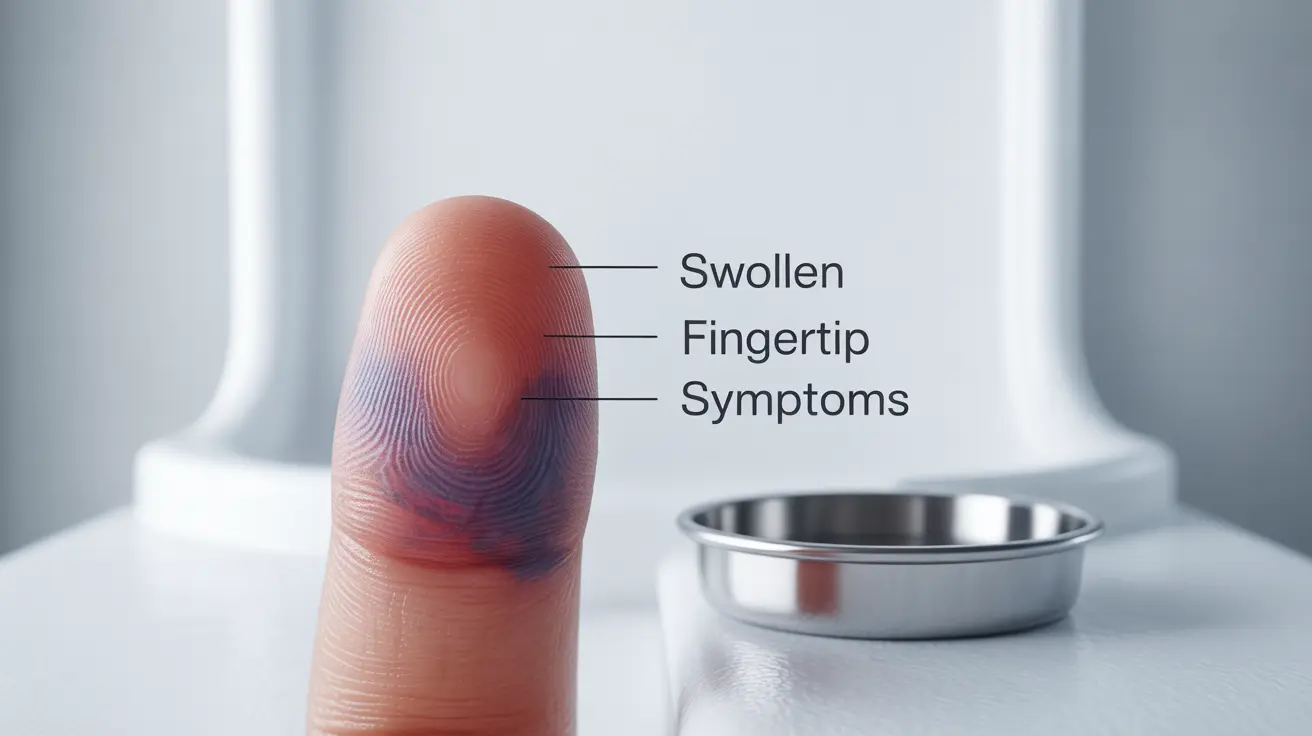A swollen fingertip can be both uncomfortable and concerning, potentially affecting your daily activities and quality of life. Understanding the various causes and appropriate treatments for finger swelling is crucial for proper management and knowing when to seek medical attention.
This comprehensive guide explores the common causes of swollen fingertips, effective treatment options, and important warning signs that indicate the need for professional medical care.
Common Causes of Swollen Fingertips
Swollen fingertips can result from various conditions, ranging from minor injuries to more serious underlying health issues:
Injury-Related Causes
Physical trauma is a frequent cause of fingertip swelling, including:
- Cuts and scrapes
- Crush injuries
- Sports-related impacts
- Burns or cold exposure
- Insect bites or stings
Infections
Several types of infections can lead to fingertip swelling:
- Paronychia (infection around the nail)
- Felons (deep tissue infection)
- Cellulitis
- Fungal infections
Medical Conditions
Certain health conditions may contribute to finger swelling:
- Arthritis (various types)
- Gout
- Lupus and other autoimmune disorders
- Raynaud's phenomenon
- Lymphedema
Treatment Options for Swollen Fingertips
Home Care Measures
For minor swelling, several home remedies can provide relief:
- Ice application for injury-related swelling
- Elevation above heart level
- Gentle compression
- Over-the-counter pain relievers
- Warm soaks for infection-related swelling
Medical Treatments
Professional medical treatment may include:
- Antibiotics for bacterial infections
- Drainage procedures for severe infections
- Anti-inflammatory medications
- Disease-specific treatments for underlying conditions
Prevention and Management
Several lifestyle modifications can help prevent or manage fingertip swelling:
- Proper hand protection during activities
- Regular hand hygiene
- Maintaining a balanced diet
- Staying hydrated
- Managing underlying health conditions
When to Seek Medical Care
Certain symptoms warrant immediate medical attention:
- Severe pain or throbbing
- Spreading redness or warmth
- Fever or chills
- Pus or discharge
- Loss of sensation or mobility
- Swelling that doesn't improve with home care
Frequently Asked Questions
What are the most common causes of a swollen fingertip and how can I identify them?
The most common causes include injuries (such as cuts or impacts), infections (particularly around the nail), and underlying medical conditions like arthritis or gout. You can identify the cause by considering recent injuries, observing accompanying symptoms like pain or redness, and noting whether the swelling is localized or affects multiple fingers.
How should I treat a swollen fingertip caused by infection or injury at home?
For injury-related swelling, apply ice, elevate the finger, and use over-the-counter pain relievers. For infections, warm soaks and keeping the area clean are important. Both conditions benefit from rest and gentle compression. However, if symptoms worsen, seek medical attention.
When should I see a doctor for a swollen fingertip that does not improve or is very painful?
Seek medical attention if you experience severe pain, spreading redness, fever, pus formation, loss of sensation or movement, or if swelling doesn't improve after 48-72 hours of home care. These symptoms may indicate a serious infection or condition requiring professional treatment.
Can autoimmune diseases or gout cause swollen fingertips, and what are the treatment options?
Yes, both autoimmune diseases and gout can cause fingertip swelling. Treatment typically involves managing the underlying condition through medication, dietary changes, and lifestyle modifications. A rheumatologist or specialist can develop an appropriate treatment plan based on the specific condition.
Are there dietary or lifestyle changes that can help reduce swelling in my fingertips?
Yes, helpful changes include reducing salt intake, maintaining a balanced diet rich in anti-inflammatory foods, staying hydrated, exercising regularly, and protecting your hands during activities. For condition-specific swelling, following your healthcare provider's dietary recommendations is crucial.




